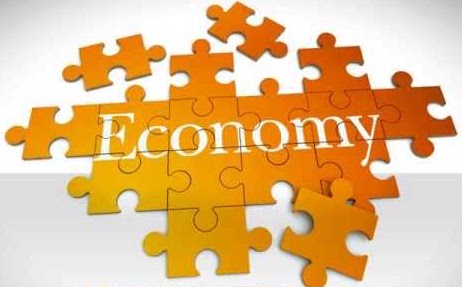 First published in the Pittsburgh Tribune Review on Wednesday, June 30, 2010, and is reprinted here with the kind permission of the author, Professor Don Boudreaux.
First published in the Pittsburgh Tribune Review on Wednesday, June 30, 2010, and is reprinted here with the kind permission of the author, Professor Don Boudreaux.
In my previous column, “Puzzling complexity” (June 16 and TribLIVE.com), I compared the economy to a billion-piece jigsaw puzzle. Each piece of the puzzle represents a slice of unique knowledge about real-world economic facts and opportunities.
I also assumed that each puzzle piece can be snugly fit with any of the other 999,999,999 pieces — but that there’s no guarantee that a recognizable picture will emerge when all billion pieces are combined together. The picture will likely be visual gibberish.
The chief reason any random combination of these billion pieces is likely to produce a meaningless — we can call it “worthless” — visual image is that the number of different ways to combine these 1 billion pieces is unimaginably colossal. The size of that number rivals the number of atoms in the universe.
So even if it’s possible to create as many as, say, 1 million different meaningful — that is, pleasing and worthwhile — pictures with different combinations of these puzzle pieces, the vast majority of images that can possibly be created by arranging and rearranging these 1 billion pieces will be meaningless and, hence, worthless.
How to ensure that these billion pieces combine together so that the resulting image is meaningful and, therefore, pleasing and valuable to humans?
Putting a central planner (or committee of planners) in charge won’t work. First, there’s no way that the planner, gazing at a huge pile of puzzle pieces, can foresee any of the possible meaningful pictures that might emerge once these billion pieces are assembled. This jigsaw puzzle doesn’t come in a box whose cover depicts the final result.
So the planner must discover what meaningful pictures are possible. And he can make this discovery only by actually assembling the puzzle.
Of course, the planner can’t assemble all billion pieces at once. At each point in time, the human limits of the planner’s attention and capacity enable him to take notice of, and to fit together, only a tiny fraction of the 1 billion pieces.
How can the planner know, as he proceeds, if the groups of pieces that he has so far assembled will turn out to be part of a larger, meaningful picture?
Suppose that what the planner has assembled thus far is indeed a mistake. When, in his process of assembling the puzzle, does he arrive at this conclusion? Are the 2 million pieces assembled so far, although the image they now depict looks like nonsense (say, a green glob), destined to become part of a meaningful image (say, a forest) once they are combined with another 2 million or another 200 million pieces?
How is the planner to sensibly choose whether to keep going with his current assembly or to start over? The best he can do is guess. Unable to see the future, the planner has no way to know that the image depicted by the 2 million pieces that he has assembled so far will prove to be useful or useless. He’s flying blind.
This planner, though, is sure that he’s on the right track. He keeps assembling. Even when he has 200 million pieces assembled and the image still remains meaningless, he presses on with confidence that, at some point as the remaining 800 million pieces are added, a beautiful picture will emerge.
As he presses on, though, people who are hoping to see a beautiful image taking shape begin to complain. They want to see a pleasing picture, but so far, all they see is random globs of color and a meaningless tangle of lines.
How might the planner respond to these complaints?
He’d likely try to persuade members of the public who look at the assembled puzzle that the image it depicts truly is beautiful and worthwhile: “To the untrained eye the image looks disorderly and ugly but, believe me, it’s really the most delightful picture possible.”
Even if no one is convinced by the planner’s self-serving attempt to explain away his failure to create a pleasing image, the ugly image is the one people are stuck having to gaze upon — unless and until they persuade the planner to try again.
Clearly, planning is a terrible way to try to assemble the puzzle. A far better way is to let the puzzle assemble itself.
Sounds odd. But what if each puzzle piece were equipped with a monitor that provided feedback on how likely it is that connecting at such-and-such an angle with this or that piece would be a step on the way to creating a larger, meaningful and beautiful picture?
If such monitors existed, the puzzle would self-assemble — and, compared to relying on the planner, do so much more quickly and more beautifully.
Fortunately, the puzzle pieces in the economy can indeed be fitted with such monitors, as we’ll see in my next column.


